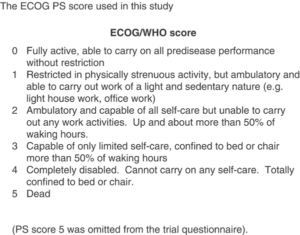Overview of the Tarsal Bones in the Foot
Comprehensive Overview of the Tarsal Bones in the Foot
Estimated Read Time: 4 minutes
The tarsal bones in the foot play a critical role in protecting the foot and supporting its functions. These bones are susceptible to injury through trauma, which can lead to foot pain. In this article, we explore the structure and function of the tarsal bones, common injuries such as fractures, and tips for recovery.
What Are the Tarsal Bones?
The tarsal bones are located in the rearfoot (also called the hindfoot) and midfoot sections of the foot. These bones are collectively known as the tarsus. There are seven bones in the tarsal region:
-
Talus: The ankle bone that forms the connection between the foot and the lower leg.
-
Calcaneus: The heel bone, which is the largest tarsal bone and provides support for walking and running.
-
Navicular: Positioned at the end of the foot between the ankle bone and the cuneiform bones.
-
Cuboid: Helps maintain balance and facilitates foot movements.
-
Medial Cuneiform: Anchors various ligaments in the foot.
-
Intermediate Cuneiform: Vital for foot flexibility.
-
Lateral Cuneiform: Plays a role in shaping the foot’s arch.
The calcaneus is the largest and most significant bone in the tarsal group, contributing to the overall structure of the foot.
Anatomy and Movement of the Tarsal Bones
The tarsal bones articulate, or connect through joints, with the metatarsal bones, which are located between the tarsal bones and the phalanges (toe bones). The tarsus meets the ankle joint, where it connects to the tibia and fibula of the leg.
Movements involving the tarsal bones include:
-
Inversion: Tilting the foot inward toward the body’s midline.
-
Eversion: Tilting the foot outward, away from the body’s midline.
-
Plantar Flexion: Pointing the foot downward.
-
Dorsiflexion: Tilting the foot upward, toward the sky.
Pronation and Supination: Understanding Foot Motion
-
Pronation: This motion involves landing on the outer edge of the heel and the inward rolling of the foot. It is a natural movement when walking or running, but excessive pronation (overpronation) can cause discomfort and strain.
-
Supination: Also known as under-pronation, this movement occurs when the foot rolls outward, typically during the push-off phase of walking or running. Excessive supination can lead to stress on the ligaments and tendons, increasing the risk of ankle sprains.
Pronation and supination can influence your walking or running style, potentially causing strain if not balanced properly.
Common Tarsal Fractures and Their Causes
A tarsal fracture refers to a break or crack in any of the tarsal bones. These injuries are rare but can occur due to trauma or repetitive stress from activities like running. The calcaneus and navicular bones are most commonly affected.
If a tarsal fracture occurs, particularly a navicular fracture, it’s important for your doctor to check your vitamin D levels. Vitamin D is crucial for bone healing and recovery.
Symptoms and Treatment of Tarsal Fractures
Symptoms of a tarsal fracture include sudden, sharp pain, difficulty bearing weight on the affected foot, and tenderness around the fracture site. Stress fractures may develop gradually, with pain increasing over time and making it difficult to bear weight on the foot.
Treatment for tarsal fractures generally involves wearing a cast for several weeks, rest, and avoiding putting weight on the injured foot. In some cases, a special boot may be prescribed, particularly for stress fractures. You may also need crutches to avoid straining the foot while it heals. In severe cases, surgery may be necessary. Innovative treatments, such as shockwave therapy or bone marrow aspirate concentrate, are also emerging as options for faster recovery.
Foot Care and Prevention
Foot care is essential at every age, whether you’re involved in sports or leading an active lifestyle. To maintain healthy feet, avoid excessive repetitive activities, stay active, and wear shoes that offer proper support and cushioning. Taking proactive steps can help prevent injuries and improve overall foot health.
Key Takeaways
-
The tarsal bones are essential for foot movement, balance, and support.
-
Common tarsal injuries include fractures, with the calcaneus and navicular bones being most affected.
-
Maintaining foot health involves exercise, proper footwear, and injury prevention strategies.






